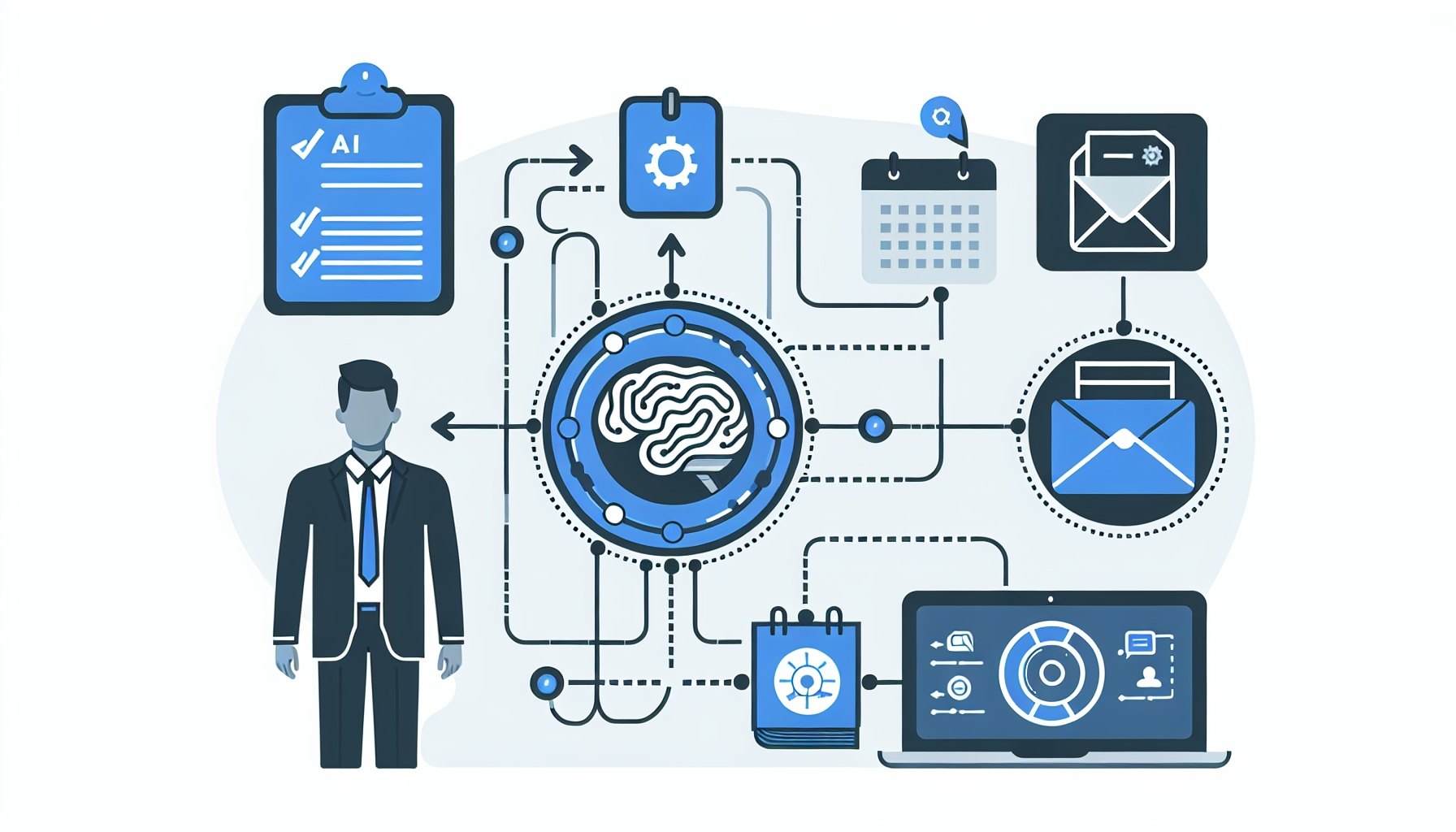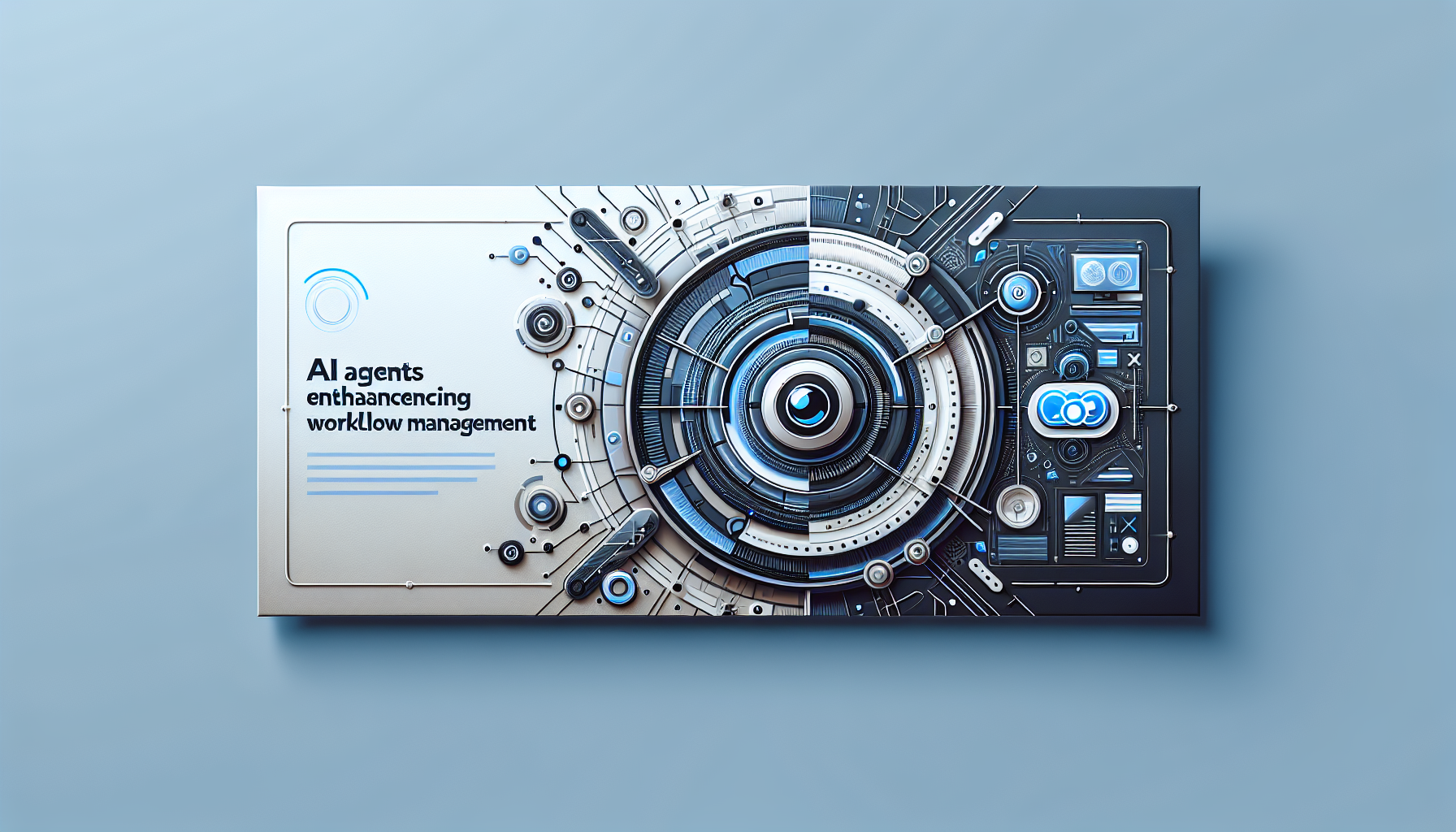Your competitors are deploying AI agents while you're still manually updating spreadsheets. In 2025, the difference between thriving and surviving as a manager comes down to one thing: leveraging autonomous AI systems that handle complex workflows without constant oversight.
AI agents aren't just chatbots with a fancy name. They're intelligent systems that can autonomously plan, execute, and adapt workflows based on your goals. Think of them as digital team members who never sleep, never forget, and continuously optimize their approach.
Why This Matters for Leaders Right Now
According to recent McKinsey research, only 1% of companies believe they've reached AI maturity, despite almost all investing heavily in the technology. The biggest barrier? Leadership understanding of how to practically implement AI systems.
Here's what changes when you implement AI agents correctly:
- Decision velocity increases 10x: Agents process information and make routine decisions instantly
- Context switching disappears: Agents maintain state across multiple workflows and systems
- Scaling becomes automatic: One agent configuration can handle 10 or 10,000 similar tasks
- Human creativity is unleashed: Your team focuses on strategy while agents handle execution
Prerequisites: What You Need Before Starting
Before diving into agent implementation, ensure you have these foundations in place:
Essential Tools & Access
- AI Platform with Agent Capabilities: Claude (with computer use), ChatGPT (with custom GPTs), or Google Gemini
- Workflow Automation Platform: n8n (recommended for visual building), Zapier, or Make.com
- API Access: Enable integrations with your existing tools (Slack, Google Workspace, Microsoft 365)
- Secure Environment: Proper access controls and data governance policies
Organizational Readiness
- Documented Processes: AI agents need clear workflows to follow initially
- Team Buy-in: Address concerns about AI replacing jobs upfront
- Success Metrics: Define KPIs for agent performance (response time, accuracy, cost savings)
- Pilot Scope: Start with one specific workflow, not enterprise-wide transformation
Step-by-Step Guide: Building Your First AI Agent Workflow
Let's build a practical AI agent that handles a common management pain point: processing meeting notes into actionable project updates across multiple systems.

Step 1: Define Your Agent's Goal
Start with a clear, measurable objective. For our example:
Agent Goal Definition
Goal: Automatically process meeting transcripts to create and assign tasks, update project trackers, and notify relevant team members within 5 minutes of meeting end. Success Criteria: - 100% of action items captured and assigned - Project status updated in real-time - Zero manual intervention required - Team notifications sent via preferred channelsStep 2: Choose Your Agent Pattern
Select the right architectural pattern based on your workflow complexity:
🎯 Single Agent Pattern
Best for: Linear workflows with consistent context
Example: Customer service responses, document processing
Complexity: Low
🚪 Multi-Agent with Gatekeeper
Best for: Workflows requiring specialized expertise
Example: Technical support escalation, multi-department requests
Complexity: Medium
🏢 Hierarchical Agent System
Best for: Complex enterprise workflows
Example: Full project lifecycle management
Complexity: High
For our meeting notes processor, we'll use the Multi-Agent with Gatekeeper pattern.
Step 3: Configure Your Base Agent
Using n8n as our platform, here's how to set up the foundation:
Base Agent Configuration (n8n)
1. Create new workflow in n8n 2. Add AI Agent node (OpenAI or Claude) 3. Configure with this system prompt: "You are a Meeting Intelligence Agent responsible for processing meeting transcripts and coordinating follow-up actions. Your capabilities include: - Extracting action items with owners and deadlines - Identifying project updates and blockers - Routing tasks to appropriate sub-agents - Maintaining context across multiple meetings For each meeting transcript you receive: 1. Extract all action items 2. Identify project status updates 3. Determine notification recipients 4. Format outputs for downstream systems" 4. Add memory buffer (Window Buffer Memory node) 5. Set token limit to 4000 for context retentionStep 4: Create Specialized Sub-Agents
Build three specialized agents that your gatekeeper will coordinate:
Step 5: Implement Tool Integrations
Connect your agents to actual systems using API integrations:
Integration Example: Slack Notification
// n8n HTTP Request node configuration { "method": "POST", "url": "https://slack.com/api/chat.postMessage", "headers": { "Authorization": "Bearer {{$credentials.slackApi.accessToken}}", "Content-Type": "application/json" }, "body": { "channel": "{{$json.recipientChannel}}", "text": "New action item assigned from {{$json.meetingName}}", "blocks": [ { "type": "section", "text": { "type": "mrkdwn", "text": "*Task:* {{$json.taskDescription}}\n*Due:* {{$json.dueDate}}\n*Priority:* {{$json.priority}}" } } ] } }Step 6: Add Error Handling and Monitoring
Robust agents need proper error handling:
- Retry Logic: Automatic retries for API failures with exponential backoff
- Fallback Paths: Alternative actions when primary integration fails
- Monitoring Alerts: Notifications to admins when agents encounter issues
- Audit Logs: Complete record of all agent actions for compliance
Real-World Examples: AI Agents in Action
Example 1: Sales Pipeline Automation
A software company implemented an AI agent system that:
- Monitors email conversations for buying signals
- Automatically updates CRM opportunity stages
- Schedules follow-up tasks based on prospect engagement
- Generates personalized proposal drafts using company templates
Result: 40% reduction in sales cycle time, 25% increase in pipeline visibility
Example 2: HR Onboarding Orchestration
An enterprise deployed agents that:
- Process new hire paperwork and route for approvals
- Automatically provision accounts across 15+ systems
- Schedule orientation meetings with relevant teams
- Track completion of onboarding tasks and send reminders
Result: Onboarding time reduced from 2 weeks to 3 days
Example 3: Customer Support Enhancement
A SaaS company's agent system:
- Analyzes support tickets for sentiment and urgency
- Routes complex issues to specialists automatically
- Suggests solutions from knowledge base
- Drafts responses for human review
Result: 60% faster response times, 35% increase in customer satisfaction
Common Pitfalls and How to Avoid Them
Solution: Begin with a single, well-defined workflow. Expand only after proving success.
Solution: Build approval gates for high-stakes decisions. Agents should augment, not replace, human judgment.
Solution: Design for failure from day one. Include fallbacks, retries, and alerting.
Solution: Run agents in "shadow mode" first, comparing their outputs to human decisions before going live.
Results You Can Expect
Organizations successfully implementing AI agents report:
- Time Savings: 10-15 hours per manager per week on routine tasks
- Error Reduction: 90% fewer missed follow-ups and forgotten tasks
- Response Speed: From hours to minutes for routine decisions
- Employee Satisfaction: 73% report more time for strategic work
- ROI Timeline: Positive returns within 60-90 days of implementation
Advanced Tips for Power Users
1. Implement Adaptive Learning
Configure agents to learn from corrections and improve over time:
Learning Loop Configuration
"After each task completion, analyze the outcome against success criteria. Store lessons learned in your context memory. Apply these insights to similar future tasks. Request human feedback on uncertain decisions and incorporate into your decision model."2. Create Agent Hierarchies
Build manager agents that coordinate teams of specialized agents for complex workflows spanning multiple departments.
3. Implement Cost Controls
Set token limits, use caching for repeated queries, and implement request throttling to manage API costs effectively.
4. Design for Scalability
Use environment variables for configurations, implement proper logging, and design workflows that can handle 10x volume without breaking.
Getting Started Today
The gap between companies that thrive and those that merely survive is widening. AI agents represent a fundamental shift in how work gets done—from human-driven to human-supervised workflows.
Here's your action plan:
- This Week: Identify one repetitive workflow that frustrates your team
- Next Week: Set up n8n or similar platform and build a simple agent
- Week 3: Run in test mode and gather feedback
- Week 4: Deploy to production and measure impact
- Month 2: Expand to additional workflows based on learnings
Ready to Transform Your Leadership with AI?
Basil AI is purpose-built for leaders who want to leverage AI agents without the complexity. Our platform handles the technical details while you focus on strategy.
Start Your 7-Day Free TrialConclusion
AI agents aren't science fiction—they're practical tools available today that can transform how you manage workflows. The question isn't whether to adopt them, but how quickly you can implement them before your competition does.
Start small, measure everything, and scale what works. Within 90 days, you'll wonder how you ever managed without autonomous AI agents handling your routine workflows.
The future of management isn't about working harder—it's about building intelligent systems that work for you. Your AI agent journey starts now.
